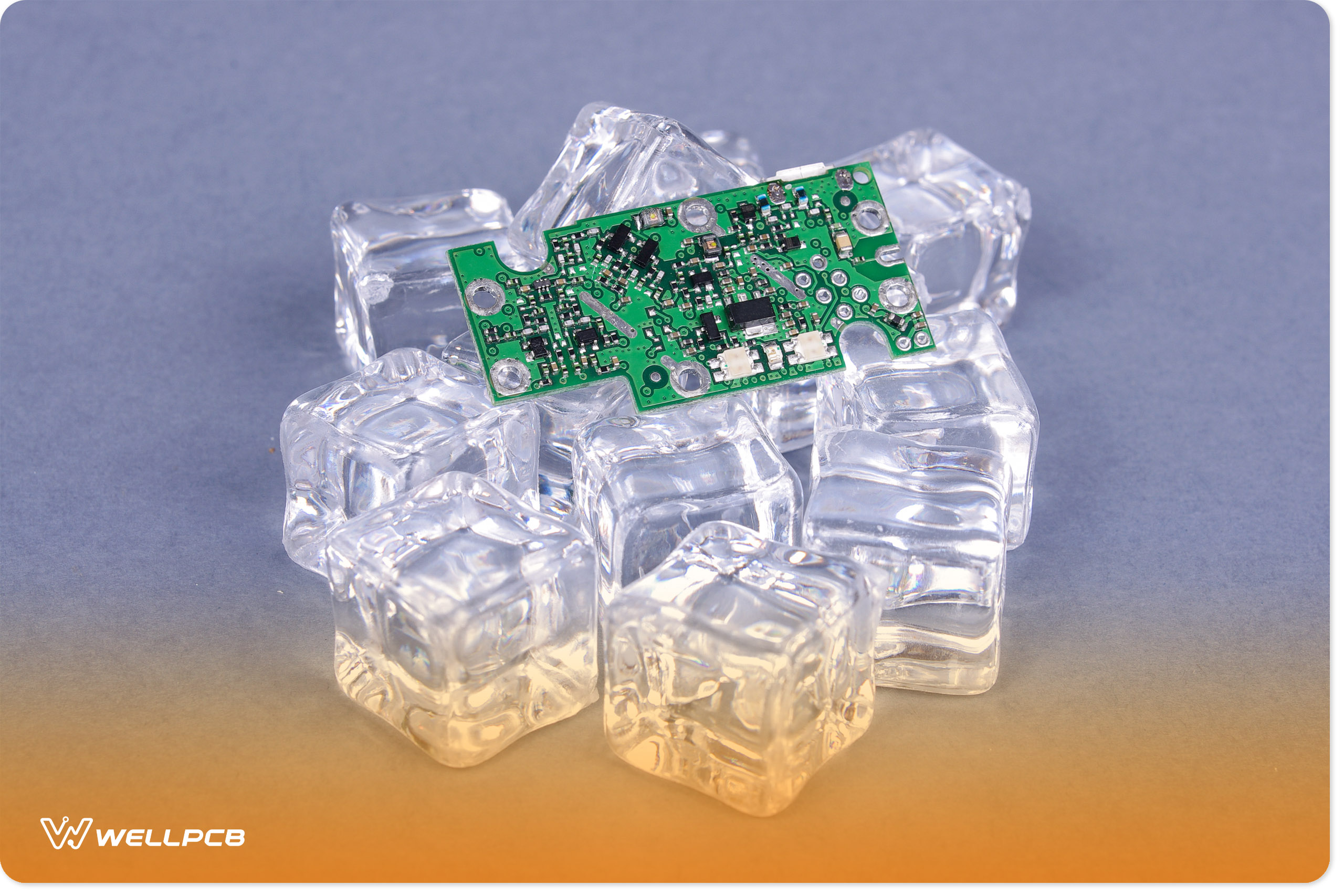Contents
- 1 What is a Teflon PCB?
- 2 Properties of Teflon PCB
- 3 Teflon PCB Manufacturing
- 4 Types of Layers in a PTFE PCB
- 5 Steps in the Production of a Teflon PCB Prototype
- 6 What are the Methods of Teflon Panelization?
- 7 What are the Different Types of Layers in Teflon PCB Inner Layer?
- 8 Advantages of Teflon PCBs
- 9 Applications of Teflon PCBs
- 10 Costs of Teflon PCBs
- 11 What Is The Difference Between Ptfe And FR4 PCB?
- 12 What Is The Dielectric Constant Of Teflon PCB?
- 13 Disadvantages Of Teflon PCB
- 14 When Should You Use Teflon PCBs
- 15 How To Choose A Good Teflon PCB Manufacturer?
- 16 Rounding Up
What is a Teflon PCB?
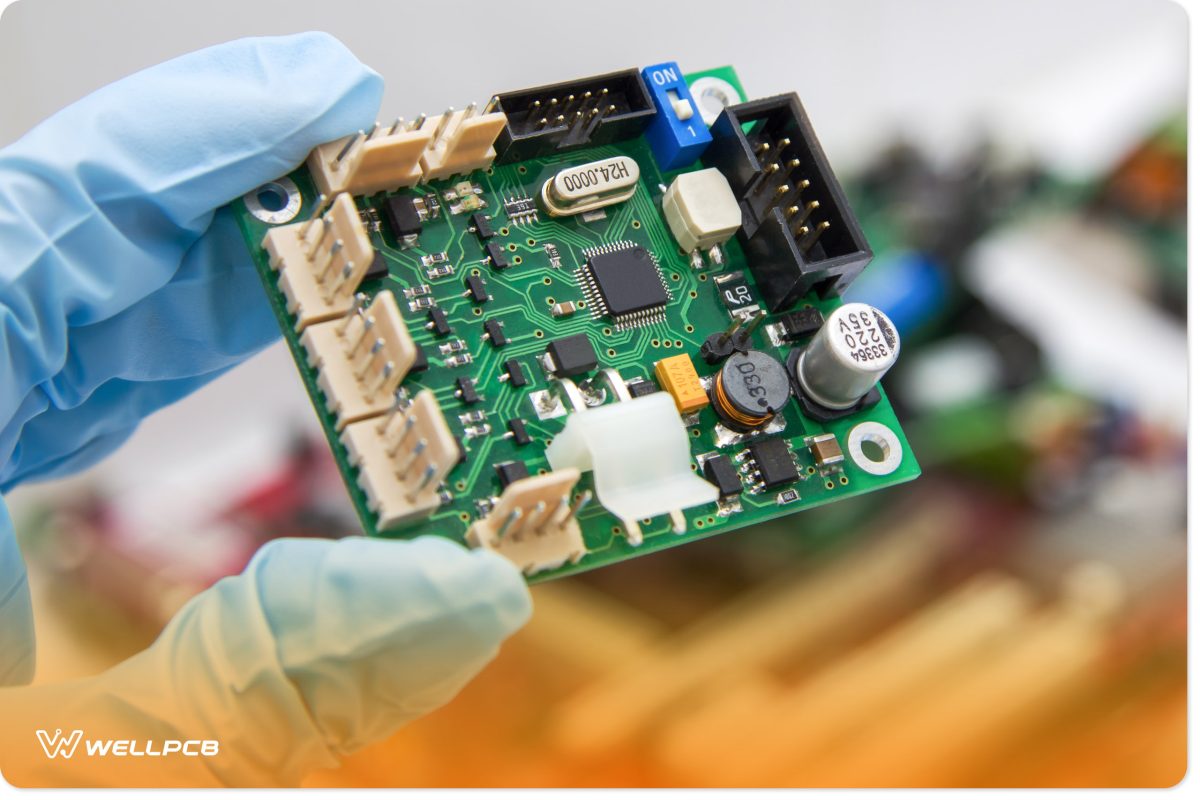
A Teflon PCB is a high-speed board that uses PTFE (Polytetrafluoroethylene) as its base material. It can transmit high-frequency signals of 5GHz and above, making it ideal for building PCBs with enhanced connections and capacities.
Interestingly, Teflon is not 100% PTFE. Originally patented by DuPont in 1941, Teflon is a variation of PTFE. Pure PTFE has a lubricating nature that makes bonding with copper layers challenging. To address this, most manufacturers reinforce PTFE with glass, woven material, or ceramic to form a reliable Teflon PCB substrate.
Furthermore, Teflon is one of the most popular materials for fabricating high-frequency PCBs. For those seeking advanced PCB production options, Teflon PCBs offer a dependable choice for high-performance applications.
Properties of Teflon PCB
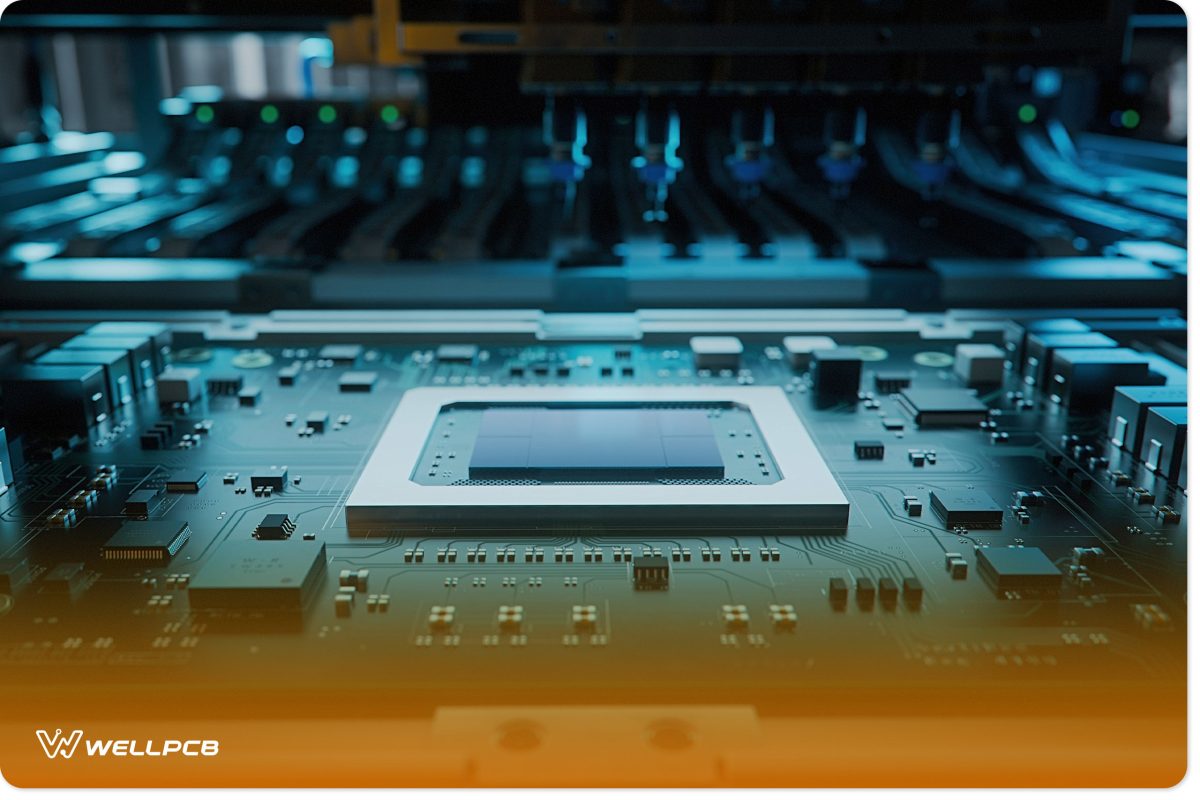
High-speed PCB
As mentioned earlier, Teflon is pretty popular among manufacturers for PCB fabrication because of its excellent properties. These properties include:
Low Thermal Expansion
Teflon is highly heat resistant, making it great for cookware. Because of this property, it’s also suitable for high-speed electronic devices that generate significant amounts of heat when operating. Plus, its Tg can be anywhere between 160 and 280˚C. Sometimes, it can have a Tg higher than 280˚C.
Additionally, Teflon boasts excellent thermal stability, enabling it to retain its form and properties in extreme temperatures. It’s also fire-resistant.
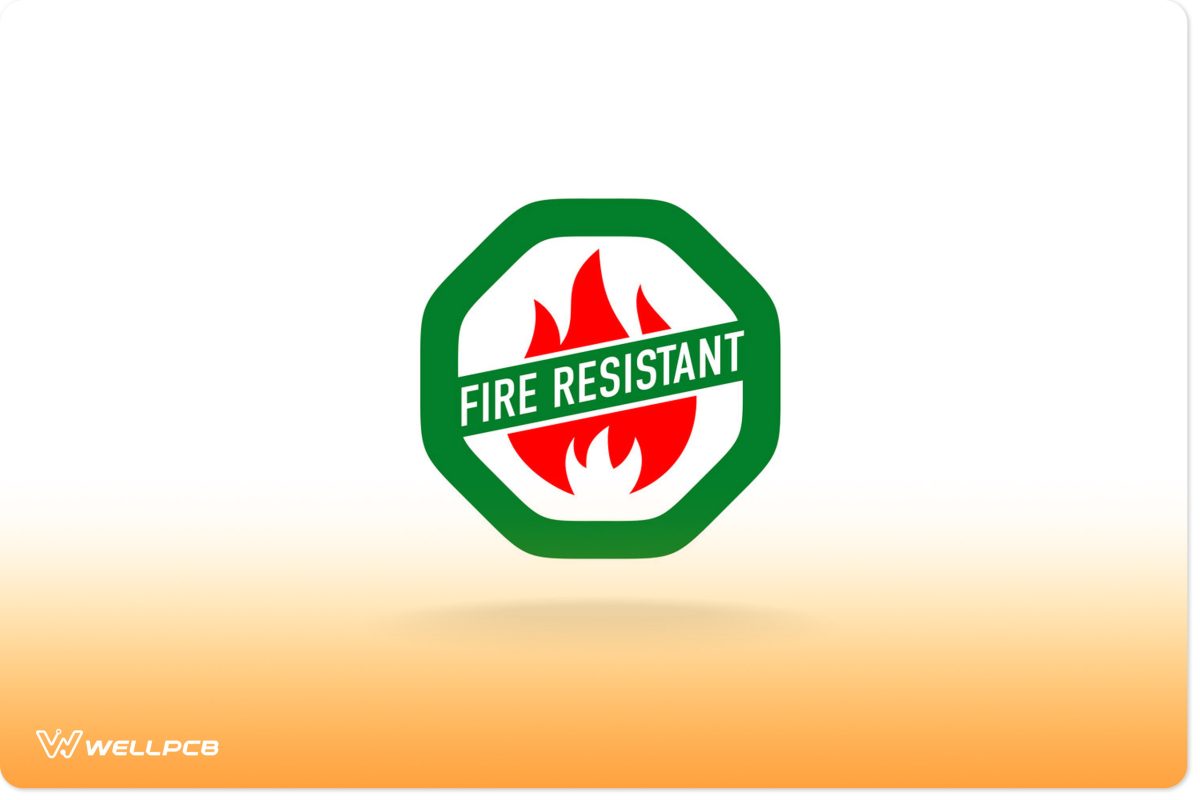
Fire Resistance
Low Dissipation Factor
Because of this property, Teflon is pretty resistant to current leaks. This is one reason why the material is suitable for microwave and high-frequency PCBs. Plus, its low dissipation factor also grants it incredible weather resistance.
High Chemical Resistance
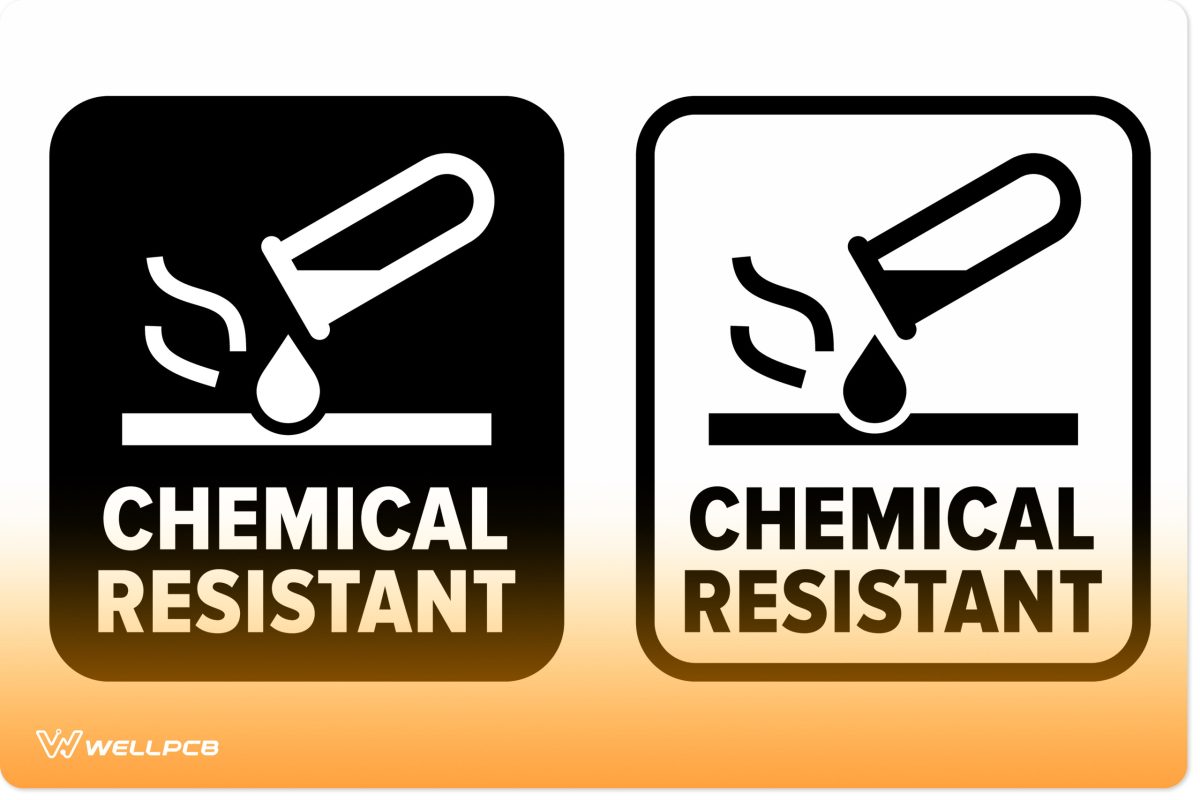
Chemical Resistance
Teflon PCBs can resist chemical effects. For this reason, it has excellent corrosion and erosion resistance. Grease and moisture also won’t affect a Teflon PCB’s performance.
Increased Dielectric Properties
Teflon boasts low dielectric loss, allowing it to maintain a dielectric constant over high-frequency applications.
Low Friction Probability
Teflon has a smooth and non-stick surface, significantly reducing friction damage chances.
Excellent Durability
PTFE PCBs offer increased durability, enabling them to maintain excellent performance under extreme conditions and even withstand damage from oxidation. They also boast incredible mechanical durability.
Teflon PCB Manufacturing
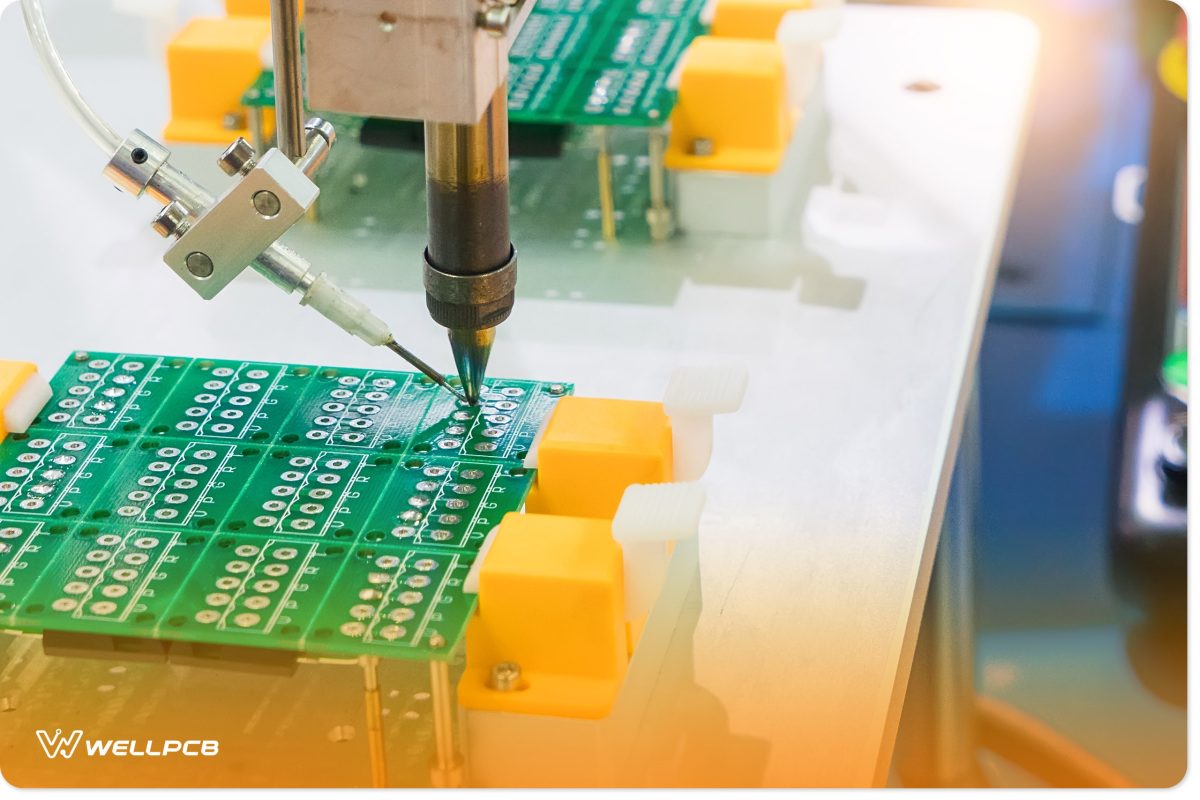
PCB Manufacturing
Here are some tips to help with the Teflon PCB manufacturing process.
How to Prepare the PCB Surface
You need sodium etching, which increases the bondability of Teflon material. To do this, soak the Teflon material in a sodium solution.
The solution shouldn’t be 100% sodium, but it should be the dominant element. After soaking, you can rinse with an H20 solution and some alcohol.
Alternatively, you can use plasma arc gratification. This process prepares your PCB’s surface for metallization, marking, and layer shaping.
Applying Solder Masks
A solder mask is an important material to apply after etching. You’ll get better results if you do it in less than 12 hours after etching. Also, baking the Teflon in an oven is best to remove any leftover moisture before applying the solder mask.
Copper Cladding
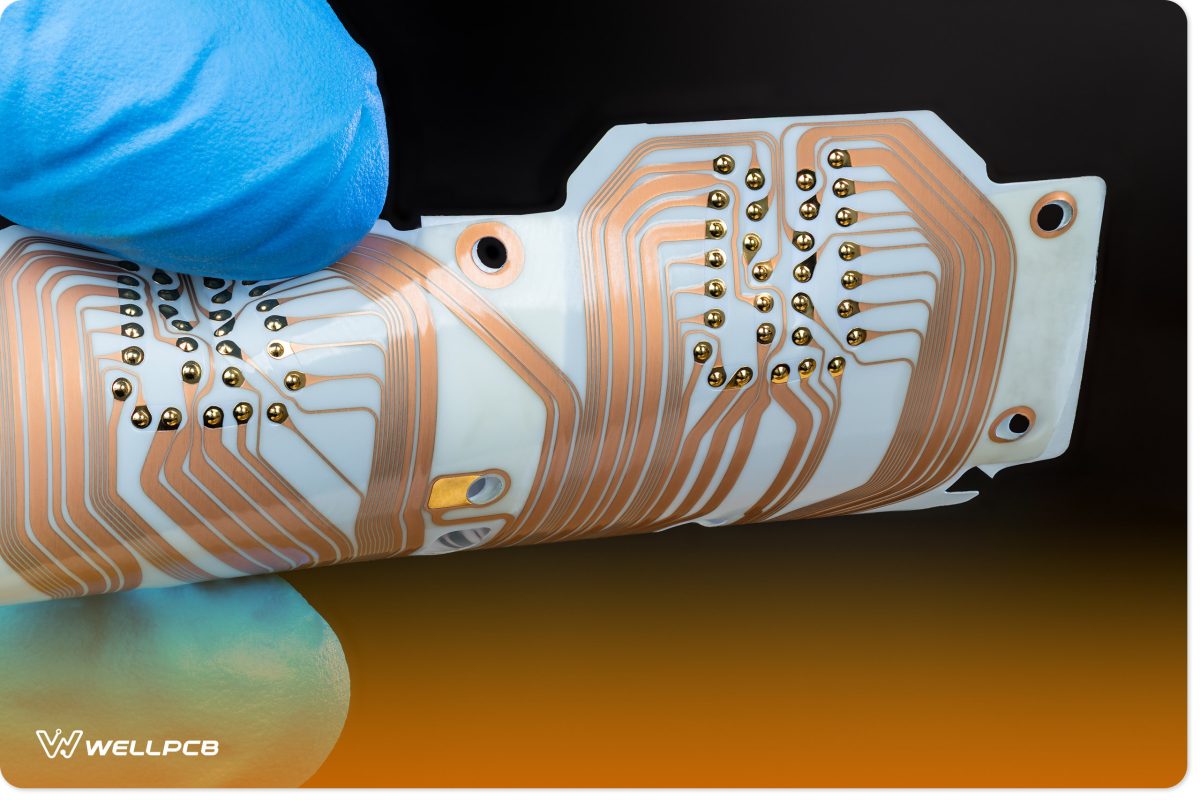
The Copper Layer
Copper cladding is essential for PCB fabrication. It’s a universal phase that prepares the copper surface, drills the Teflon material, and plates the through-holes. Copper with incredible tensile strength is best, so you won’t have lift pads and barrel cracks.
Laminating your Teflon PCB
If you’re not using bonding films or prepregs, laminate your Teflon PCB at 370°C and 450-500 pounds PSI pressure.
Bonding films and prepregs with low melting points would help reduce the lamination temperature to 120°C or 215°C.
Moreover, some hybrid Teflon PCBs require a different lamination process. These hybrids combine Teflon and FR4 and need oxide pretreatment before laminating.
Drilling
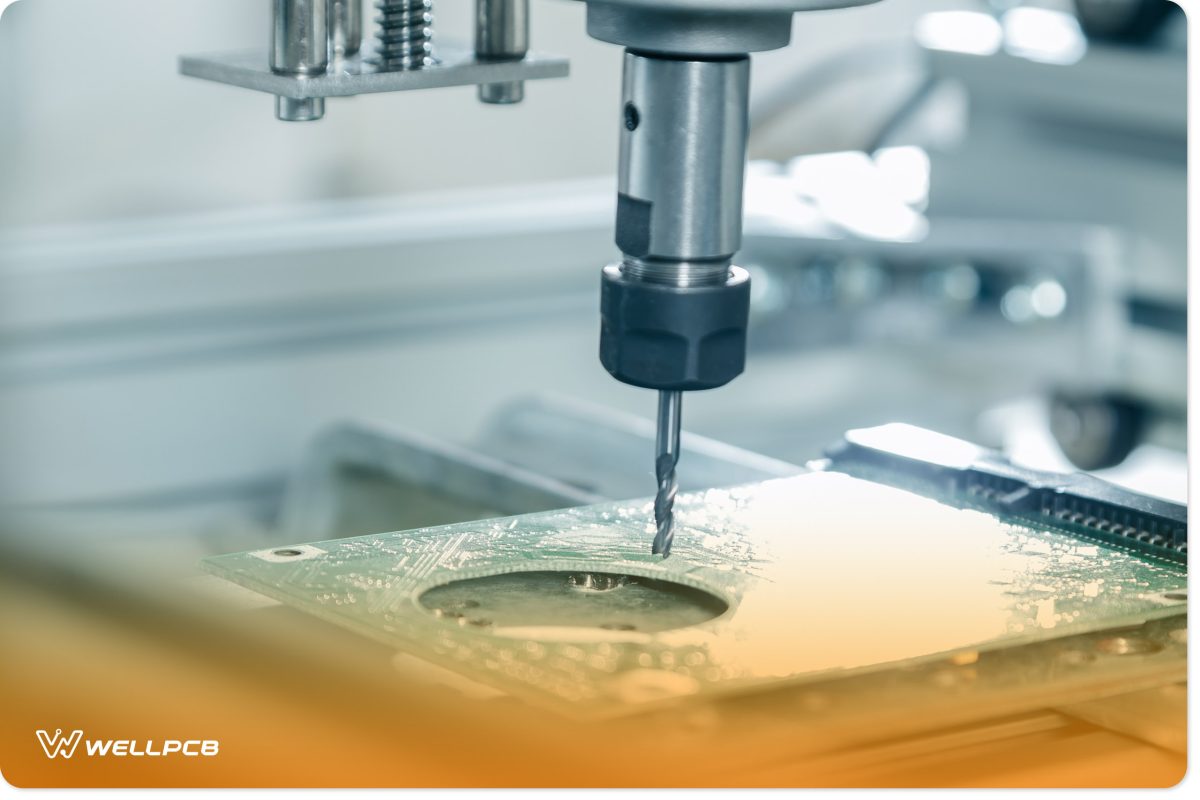
PCB Drilling
You’d need some specific equipment to drill on a Teflon PCB. The kind of drill you need for precise and clean holes is one with a high chip load. It will ensure there are no fibers left and prevent Teflon tailing.
Storing your Teflon Laminates
Teflon can create durable PCBs, but the laminates are soft and easily damaged. So, it’s crucial to always handle them with care and avoid stacking them in ways that could potentially cause damage.
Types of Layers in a PTFE PCB
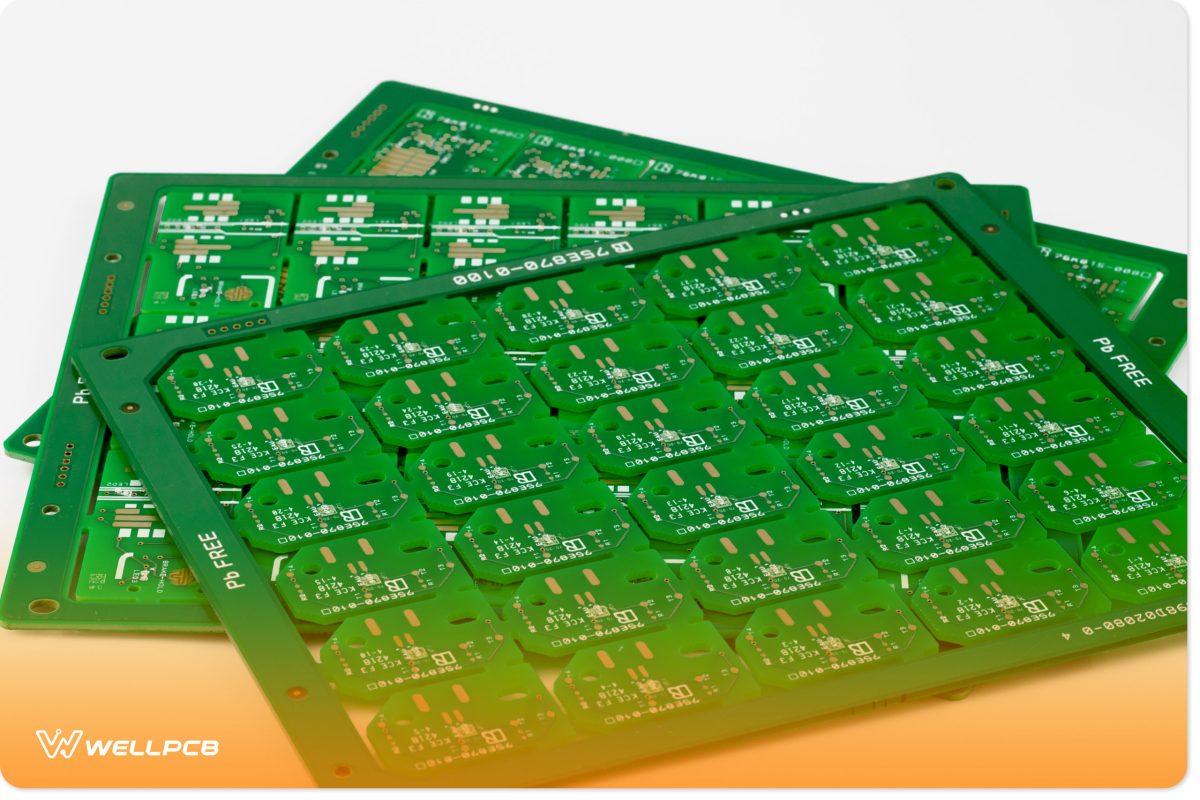
PCB Layers
A PTFE PCB can have two types of layers, including external and internal layers.
External Layers
These are the outer copper layers where you can attach your components. In addition, it includes a copper foil that you can electroplate with copper.
Electroplating helps to increase thickness and includes more copper in the thru-hole barrels. Plus, you can customize the final copper thickness to fit the applications of your Teflon PCB.
Internal Layers
The several copper laminates between the top and bottom layers constitute the internal layer.
Sometimes, you can use copper pour to create a power or ground plane inner layer. It can help the layer-to-layer bonding process and reduce the amount of etchant used when manufacturing.
Also, the copper thickness and weight depend on your PCB’s specifications. Similarly, the internal copper weight determines the minimum space and width you can fabricate.
Steps in the Production of a Teflon PCB Prototype
Here are some steps you can follow to help build a Teflon PCB prototype:
Step One: Make your Designs
You can design your Teflon PCB prototype with a stencil and PCB design software. Here, you must pay attention to your prototype’s general layout because you’ll use it for the final designs.
Step Two: Choose your Base Material
You don’t have to use PTFE when building your prototype—save it for the final designs. Instead, you can use plastic as a substitute material for PCB prototyping.
Step Three: Test your Design
There are two ways you can test your prototype. First, you can use a simulation or construct an initial prototype board. Design testing is crucial because it helps verify components and ensure they are in the correct position.
Step Four: Time to Troubleshoot
If you find any errors after your design tests, you can troubleshoot to fix them within your board’s design. You can find faults, including misplaced/faulty components or design bugs.
Step Five: Construct your Prototype and Test Its Functionality
After building your prototype, you’ll need to test its functionality. This iThis is the final step to ensuring your board is error——and bug-free. When you’re satisfied, you can send your designs for manufacturing.
What are the Methods of Teflon Panelization?
There are two panelization methods you can use for Teflon PCBs, which include V-groove and tab-route. Let’s take a closer look at these methods:
V-Groove Panelization
For this method, you’ll need a triangular saw to cut through one-third of both panel sides. This will leave a thin section of Teflon holding two separate PCBs together. You can also use simple tools to separate them when necessary.
V-groove only works for PCBs with straight lines separating them. And the cuts must be from one board edge to the other.
Tab-Route Panelization
Tap-route is a more flexible method for PCBs that don’t have straight and simple lines separating them. It also works for boards that include multiple designs.
For this method, you’ll use a router to cut through the Teflon between boards, leaving small tabs to keep them together during assembly. You can use depanelization tools to break the tabs or do it manually.
Perforated Tabs
Here, you’ll perforate tiny holes called mouse bites into your tabs. These holes make it easy to depanelize individual PCBs.
However, it’s crucial to sand after perforating to remove leftover materials from your PCB’s edges.
What are the Different Types of Layers in Teflon PCB Inner Layer?
Here are the different types of inner layers we have on a Teflon PCB:
Mechanical Layer
Your design will determine the number of mechanical layers your Teflon board will need. But, it needs at least one of these layers to fit the PCB’s physical dimensions.
Solder Mask Layer
It’s a layer of green protective film that prevents damage and contamination.
Keep Out Layer
Keep out layers state the working boundaries of Teflon PCBs.
Routing Layer
Routing layers are responsible for connecting the components of Teflon PCBs.
Solder Paste Layer
You’ll need solder paste layers on areas where you’re mounting components. It helps improve solder bonding and improves solder flow.
Power and Ground Planes
These copper layers link the power and ground planes to an onboard voltage terminal.
Split Planes
With this layer, you can separate the ground and power planes while connecting them to different voltage points.
Silkscreen Layer
The silkscreen layer is only for easy identification.
Advantages of Teflon PCBs
Here are some benefits you can enjoy from using Teflon fabricating material:
Impressive Dielectric Strength
Teflon PCBs have high dielectric strength, making them non-conductive. Hence, they are excellent insulators that can prevent electrical breakdowns.
Mechanically Rigid
Teflon PCBs can maintain their mechanical stability even under applications that require high mechanical stress.
Immense Durability
PTFE can withstand many things, making it one of the most durable materials. It can resist oxidation, embrittlement, ultraviolet rays, and discoloration.
Its durability also makes it cost-effective as it can last for extended periods.
Applications of Teflon PCBs
You can use Teflon PCBs to produce the following devices:
- WiFi antennas
- Power amplifiers
- Wireless base stations
- Automotive cruise controls
- Thermal solutions
- Handheld cellular devices
- Telematics and infotainment devices
Costs of Teflon PCBs
There is no fixed cost for Teflon PCBs. Instead, several factors determine how much a manufacturer will charge. These factors include panel size, inspection charges, surface finish, size and number of drills, layers, and type and size of raw materials.
What Is The Difference Between Ptfe And FR4 PCB?
Manufacturers constantly confront Teflon PCB vs. Ptfe contrasts. Both materials are considered industry standards, and they offer various benefits that set them apart.
| PFTE PCB | FR4 PCB | |
| Composition | Thermoplastic fluoropolymer, hence the name Polytetrafluoroethylene.It is produced when you combine fluorspar, chloroform, and HCL acid. | Woven fiberglass with epoxy resin |
| Preferred Qualities | Stable and low dielectric constant, high thermal expansion coefficient. | High electrical insulation, high flame resistance, retains mechanical strength. |
| Cost of Production | A Teflon PCB manufacturer will incur higher costs using PFTE. | With its common thickness sizes, it costs less to produce at scale. |
| Areas of use | Preferred in applications with high-temperature changes, such as microwave applications. | FR4 applications could vary from simple circuits to multilayer boards where varying thickness is a priority. |
| Glass Transition Temperature | Unlike FR4, PFTE glass transition can change depending on the material. | FR4 has a set Tg value of about 130 degrees Celsius. |
What Is The Dielectric Constant Of Teflon PCB?
Teflon PCB has a low dielectric constant of about 2.2. Compared to FR4’s DK of 4.4-4.8, Teflon’s DK makes it a better material for applications requiring high heat tolerance. The low DK of Teflon PCB shows it is a poor electrical conductor, making it a prized product as an insulator.
That way, it reduces electrical loss in PCBs.
Disadvantages Of Teflon PCB
High cost of production
Cost is one of the biggest disadvantages that Teflon manufacturers face. Most PCB production is done in huge batches. More Teflon PCB production drives up the cost. Still, the cost is justified, considering the desirable qualities of Teflon.
Low Availability
Unlike other substrates, Teflon is not as widely available. Due to its high production cost, manufacturers don’t produce a lot of it.
Complex Manufacturing
Other than being widely available, Teflon requires complex production processes. It has a high melt viscosity. Furthermore, it is less adhesive than other PCB materials.
The above properties limit its copper bonding capabilities. Manufacturers must apply extra procedures to reinforce it with ceramics, glass fiber, and woven glass.
Extra Handling
Granted, Teflon works well in high-heat and high-frequency applications, but it is also likely to lose mechanical stability. It cracks and delaminates, a process that could make multi-layered Teflon PCBs unusable.
When Should You Use Teflon PCBs
Teflon PCBs might have limitations. However, some applications just call for Teflon PCBs.
When You Need High Thermal Stability
Teflon is a thermal plastic with high thermal stability. This makes it preferable in high-frequency applications such as radar and communication systems.
Teflon is a common material in aerospace and defense equipment where thermal stability is needed.
When You Need Low Signal Loss
Teflon is a poor electrical conductor with a dielectric constant as low as 2.2. However, that quality gives it a low signal loss.
Applications such as microwave communication, antennas, and base stations require high frequency and total signal integrity with minimal loss.
When You Need High Chemical And Moisture Resistance
You have heard of Teflon coating that makes non-stick equipment. Moisture and chemical resistance don’t only apply to household equipment.
Medical equipment such as MRI machines rely on this quality to perform optimally and stay durable.
Other medical applications where chemical and moisture resistance are crucial include artificial blood vessels and pacemakers.
When You Need High Resistance To Corrosion
Harsh chemicals are common in engines and some industries. Teflon’s high resistance to corrosion makes it the best material for automotive industries. Combined with high-temperature tolerance, low dielectric constant, and water resistance, you’ll find it in car parts, industrial automation, and control devices.
How To Choose A Good Teflon PCB Manufacturer?
- Look at their production capability. Due diligence on production capability lets you know they can produce Teflon PCBs easily and in large quantities if needed.
- Check their certifications. Questions such as do they have an ISO 9000 certification for Teflon PCB manufacture should come up.
- Have a pre-production discussion or meeting to verify that they employ high production standards. Check their track record to ensure they have a firm grasp of the processes and materials involved. Can they meet your manufacturing needs?
- Closely check if they have the best quality standard quality assessment procedures and tools.
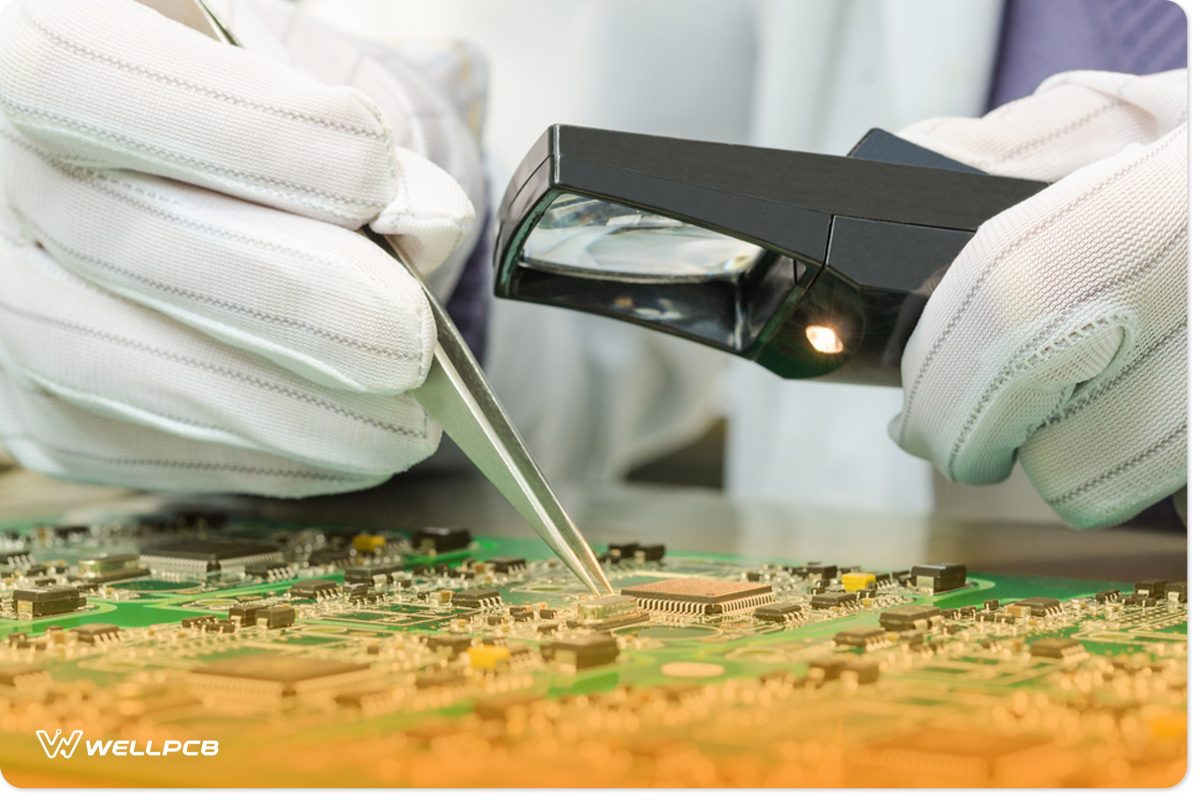
A manufacturer conducts QA tests on PCB.
- To narrow down the list of good Teflon PCB manufacturers, it might be wise to request a sample product or a small-scale initial production run.
- Once you have selected manufacturers, choose one that offers a balance of cost, reliability, and high quality.
- Keep a backup manufacturer in case you need repairs or extra Teflon PCBs.
Rounding Up
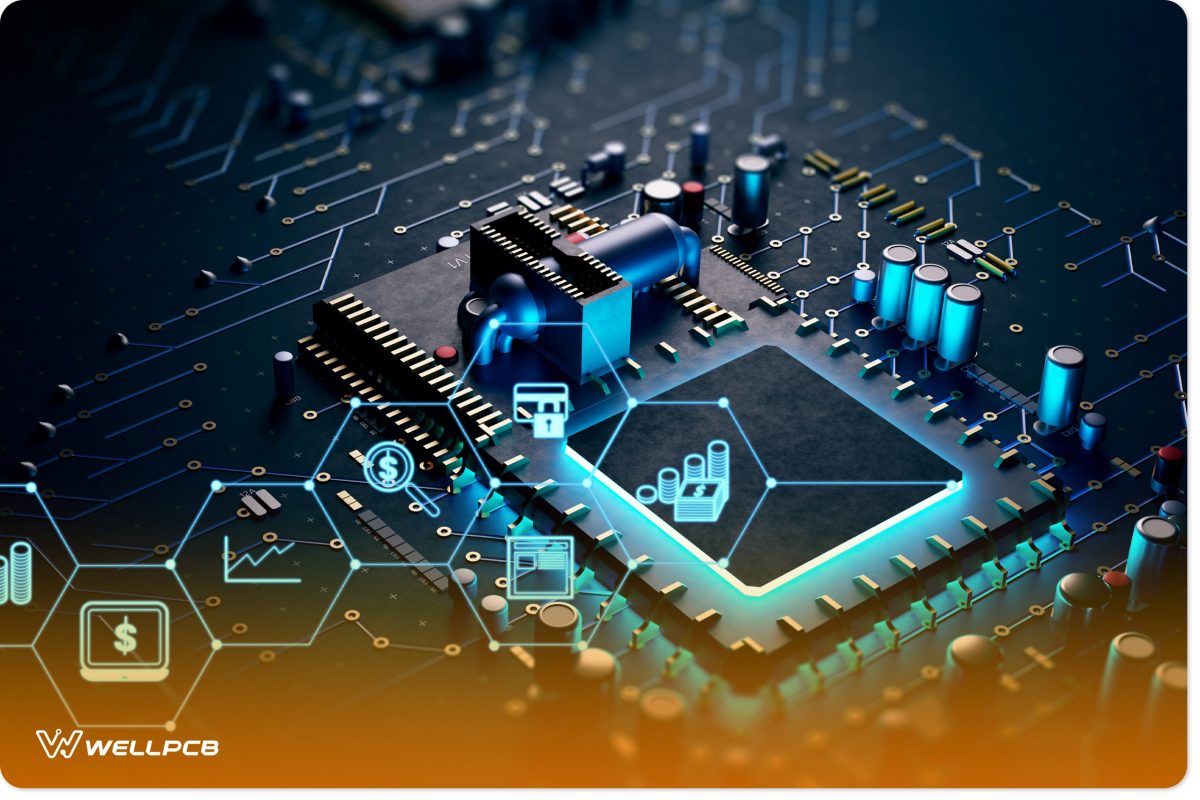
High-tech PCB
Teflon PCBs are excellent boards for high-frequency applications. They can handle the heat generated from these applications and resist damage from chemicals, oxidation, and friction.
WellPCB is a PCB manufacturer well-versed in circuit board fabrication and ready to offer the best services at affordable rates.
So, don’t hesitate to contact us if you want to manufacture a PTFE Teflon PCB.



